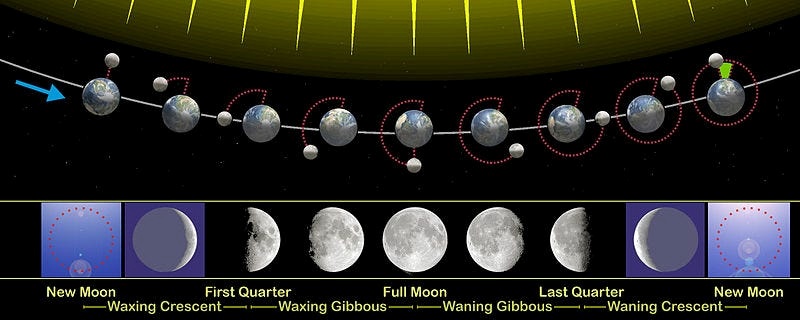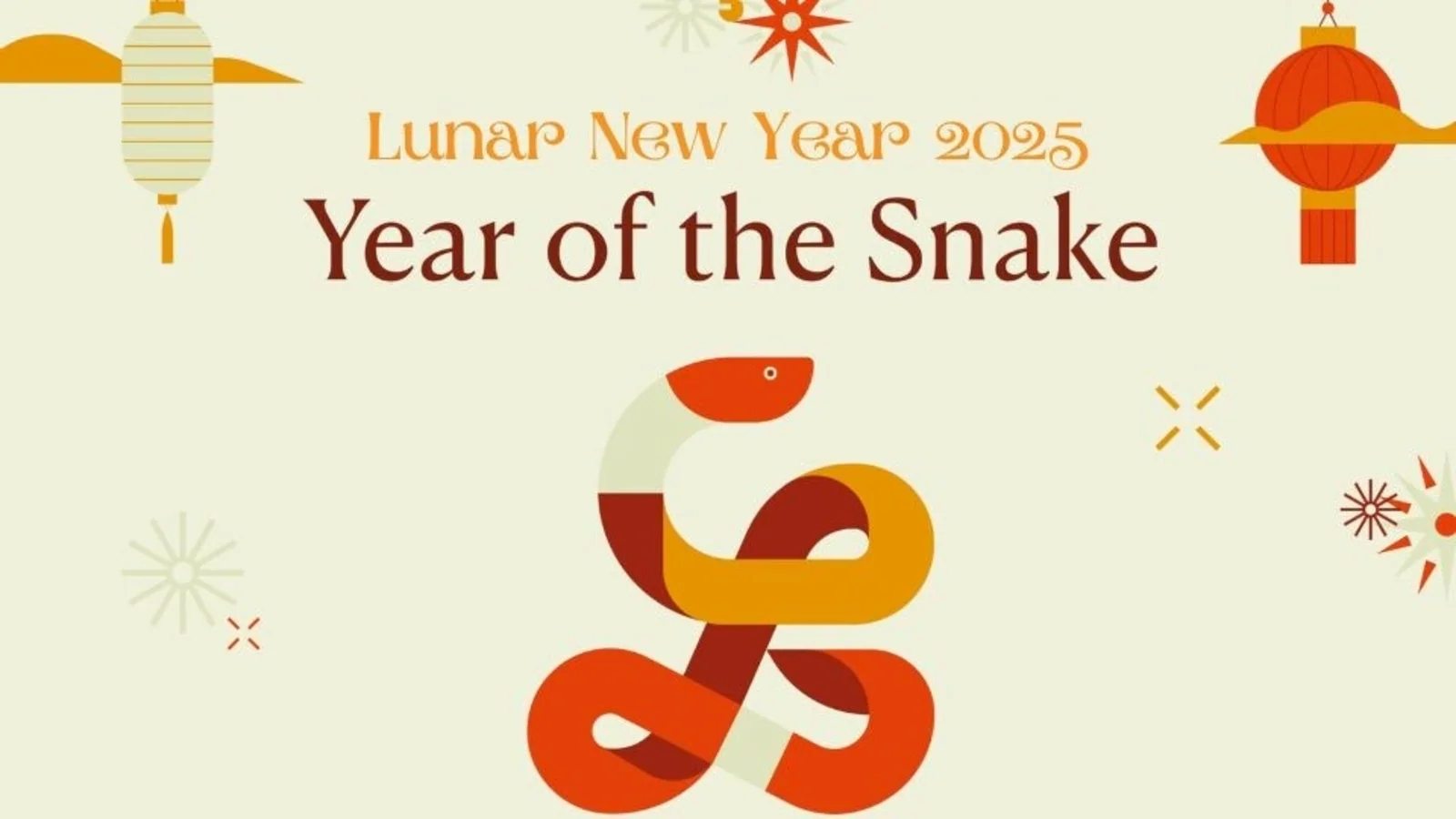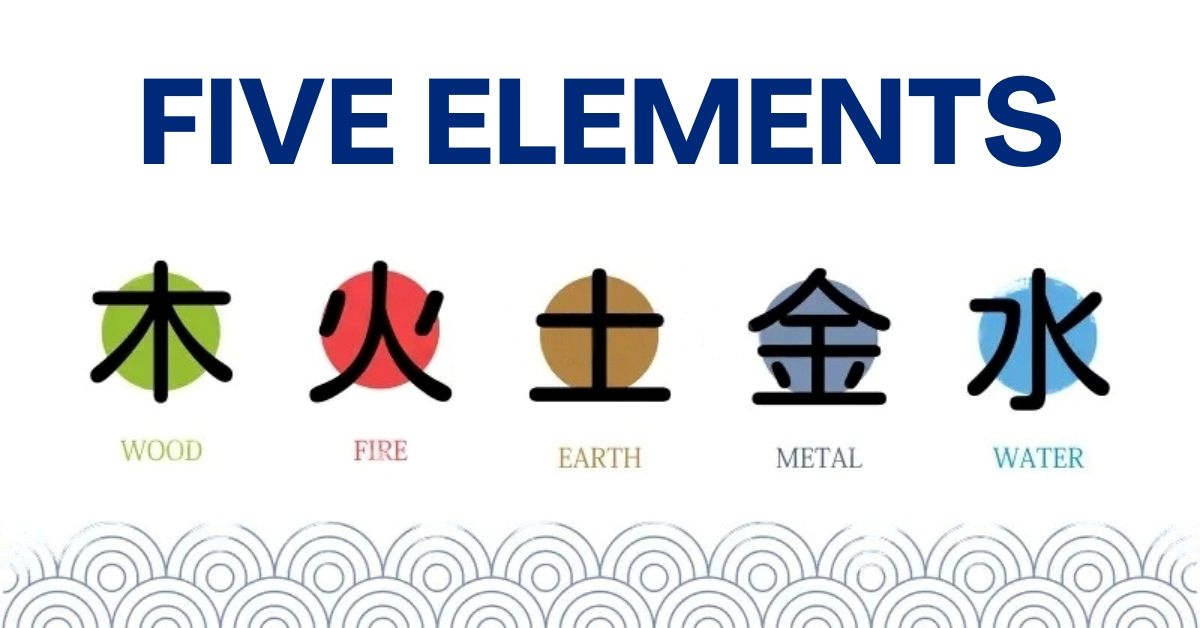There are generally three types of calendars: the Gregorian calendar, the lunar calendar, and the lunisolar calendar. Each one is used by different cultures and regions around the world to mark time and important events.
We all usually follow the Gregorian calendar, which is a solar calendar, meaning that it is based on the Earth's orbit around the Sun, typically lasting about 365.24 days. So, our new year will fall on January 1 every year.
However, some cultures, like the Chinese, follow the lunisolar calendar for their New Year celebrations. But what distinguishes the Chinese lunar calendar? Curious to know? Let's dig in!
Check Out| Chinese New Year 2025: Date, Animal this Year and Holiday Status around the World
What is a Lunisolar Calendar?

Source: Medium
Lunar comes from the Latin word ‘Luna’ which means the ‘moon.’ Additionally, the word ‘Solar’ is also a Latin word, which comes from the word ‘Sol’ meaning ‘sun.’
A lunisolar calendar is a type of calendar that accounts for both the phases of the moon and the position of the sun in the sky.
It combines elements of lunar calendars, which are based on the Moon's 29.5-day cycle (new moon to new moon), and solar calendars, which align with the Earth's orbit around the Sun (roughly 365.25 days).
Also Read| China Unveils Artistic Logos for Its Ambitious 2025 Space Missions
What is Chinese New Year?
Chinese New Year, also known as Lunar New Year or Spring Festival, is a significant cultural celebration observed by Chinese communities worldwide.
The festival marks the beginning of a new year on the traditional lunisolar Chinese calendar, typically falling between January 21 and February 20. In 2025, Chinese New Year will be celebrated on January 29, culminating with the Lantern Festival on February 12.
Historical Background
The origins of Chinese New Year date back approximately 3,500 years, with roots in ancient agricultural practices and rituals honouring deities and ancestors. It is believed that the festival evolved from celebrations marking the end of winter and the beginning of spring, symbolising renewal and hope for prosperity in the coming year.
Explore More| What is CR450 Prototype? China's New Bullet Train Breaks Records with 450 km/h Speed Limit
The Zodiac Animal for Chinese New Year 2025
2025 being the Year of the Snake carries specific astrological meanings. The Snake is associated with wisdom, elegance, and intuition.
Why 'Snake' Animal Sign This Year?

Source: Hindustan Times
The Year of the Snake in 2025, specifically the Wood Snake, begins on January 29 and is significant for its themes of wisdom, transformation, and growth.
The Snake, being the sixth animal in the Chinese zodiac, embodies traits such as intuition and adaptability. The Wood element enhances these characteristics, promoting development and nurturing relationships.
This year is seen as an opportunity for personal and professional growth, encouraging individuals to embrace change and pursue long-term goals while fostering harmonious connections with others.
Read On| What is India-China LAC Patrolling Agreement? Key Points and Explanation
Significance of Zodiac Signs in the Chinese Calendar
The Chinese zodiac consists of 12 animal signs, each representing a year in a repeated 12-year cycle. Each sign is associated with distinct personality traits and characteristics. Below are the zodiac signs along with their significance:
1) Rat
- Years: 1936, 1948, 1960, 1972, 1984, 1996, 2008, 2020
- Traits: Charming, creative, and resourceful. Rats are known for their intelligence and adaptability. They are often seen as sociable and good at networking.
2) Ox
- Years: 1937, 1949, 1961, 1973, 1985, 1997, 2009, 2021
- Traits: Diligent, dependable, and strong-willed. Oxen are recognized for their patience and determination. They value hard work and are often seen as reliable leaders.
3) Tiger
- Years: 1938, 1950, 1962, 1974, 1986, 1998, 2010, 2022
- Traits: Brave, competitive, and charismatic. Tigers are known for their enthusiasm and adventurous spirit but can also be impulsive.
4) Rabbit
- Years: 1939, 1951, 1963, 1975, 1987, 1999, 2011, 2023
- Traits: Gentle, compassionate, and artistic. Rabbits are seen as lucky and are often diplomatic in their interactions.
5) Dragon
- Years: 1940, 1952, 1964, 1976, 1988, 2000, 2012, 2024
- Traits: Confident, ambitious, and charismatic. Dragons are considered powerful and dynamic leaders with a flair for the dramatic.
6) Snake
- Years: 1941, 1953, 1965, 1977, 1989, 2001, 2013, 2025
- Traits: Wise, enigmatic, and intuitive. Snakes are known for their analytical skills and can be both charming and secretive.
7) Horse
- Years: 1942, 1954, 1966, 1978, 1990, 2002, 2014
- Traits: Energetic and free-spirited. Horses value independence and are known for their sociability and enthusiasm.
8) Goat (or Sheep)
- Years: 1943, 1955, 1967, 1979, 1991, 2003, 2015
- Traits: Gentle and mild-mannered. Goats are artistic and often seek peace but can be indecisive at times.
9) Monkey
- Years: 1944, 1956, 1968, 1980, 1992, 2004, 2016
- Traits: Clever and witty. Monkeys are playful and curious but may also be mischievous or unpredictable.
10) Rooster
- Years: 1945, 1957, 1969, 1981, 1993, 2005, 2017
- Traits: Observant and hardworking. Roosters are known for their confidence and punctuality but can be perfectionists.
11) Dog
- Years: 1946, 1958, 1970, 1982, 1994, 2006
- Traits: Loyal and honest. Dogs are protective of their loved ones and value justice but can also be stubborn.
12) Pig (or Boar)
- Years: 1947, 1959,1971 ,1983 ,1995 ,2007 ,2019
- Traits: Generous and compassionate. Pigs enjoy life’s pleasures but can also be naive or gullible at times.
Discover| Happy New Year 2025: 50+ Quotes, Wishes, Greeting Messages to Share with Friends and Family
What Does 5 Elements Mean in Chinese Calendar?

The significance of the five elements in the Chinese calendar is rooted in the Five Elements Theory (Wu Xing), which plays a crucial role in Chinese philosophy, astrology, and various cultural practices.
Each element cyclically interacts with others, influencing personality traits, relationships, and even destiny. Here’s a detailed overview of each element:
1) Wood
- Traits: Growth, vitality, and creativity.
- Characteristics: Individuals associated with Wood are often seen as idealistic, planners, and visionaries. They are adaptable and can thrive in collaborative environments.
- Symbolism: Wood represents spring, renewal, and expansion. It is linked to the liver in traditional Chinese medicine, emphasising health and vitality.
2) Fire
- Traits: Passion, energy, and enthusiasm.
- Characteristics: Those with a Fire element are courageous, adventurous, and good at research. They often take initiative and inspire others with their enthusiasm.
- Symbolism: Fire signifies summer and warmth. It is associated with the heart and emotional expression, highlighting joy and intensity.
3) Earth
- Traits: Stability, nurturing, and balance.
- Characteristics: Earth individuals are known for their kindness, honesty, and leadership qualities. They are thoughtful mediators who value harmony.
- Symbolism: Earth represents late summer or harvest time. It is linked to the spleen/pancreas in traditional medicine, focusing on nourishment and support.
4) Metal
- Traits: Strength, determination, and resilience.
- Characteristics: Metal people are persistent, hardworking, and often seen as managers or leaders. They possess strong willpower but can also be seen as rigid or uncompromising.
- Symbolism: Metal corresponds to autumn and represents clarity and precision. It is associated with the lungs in traditional medicine, emphasising breath and communication.
5) Water
- Traits: Flexibility, intuition, and introspection.
- Characteristics: Individuals connected to Water are sympathetic perfectionists who excel at coordination. They are often insightful but may struggle with indecision.
- Symbolism: Water symbolises winter and adaptability. It is linked to the kidneys in traditional medicine, focusing on fluidity and emotional depth.
Interaction of Elements
The elements interact in two primary ways:
- Generating Cycle: Each element can generate or support another (e.g., Wood fuels Fire; Fire creates Earth through ash).
- Controlling Cycle: Each element can control or restrain another (e.g., Water extinguishes Fire; Fire melts Metal).
You Might Like| New Year Day 2025: 30+ Images, Photos, Pictures to Share with your Loved for New and Fresh Start
Traditional Celebrations and Customs of Chinese New Year
Chinese New Year, also known as the Spring Festival, is celebrated with a rich tapestry of traditions and customs that vary across regions but share common themes of family, renewal, and good fortune.
In 2025, the celebrations will begin on January 29 and last for 15 days, culminating in the Lantern Festival on February 12.
1) Family Reunion Dinner
Nian Ye Fan (年夜饭): The most significant meal occurs on New Year's Eve, when families gather for a lavish dinner. This meal often includes symbolic dishes such as dumplings (representing wealth) and fish (symbolising surplus).
2) Fireworks and Firecrackers
Fireworks are a traditional way to ward off evil spirits and celebrate the arrival of the new year. The loud noises are believed to scare away the mythical beast Nian, which is said to terrorise villages during this time.
3) Red Envelopes

Source: Ubuy India
Hong Bao (红包): Elders give red envelopes containing money to children and younger family members as a symbol of good luck and prosperity. This practice is meant to ward off evil spirits and ensure health in the coming year.
4) Cleaning and Decorating
In preparation for the New Year, families clean their homes thoroughly to remove bad luck from the previous year. After cleaning, homes are decorated with red items like lanterns and couplets, which symbolise good fortune.
5) Cultural Performances
Lion and Dragon Dances: These vibrant performances are held in public spaces to bring good luck and chase away evil spirits. They are often accompanied by drums and cymbals.
6) Lantern Festival
The festivities culminate with the Lantern Festival on the 15th day of the new year, where people light lanterns, solve riddles written on them, and enjoy sweet glutinous rice balls (tangyuan), symbolising family unity.
7) Religious Practices
Many families visit temples to pray for blessings in the new year. They may burn incense and make offerings to deities as part of their spiritual observance.
8) Other Customs
- Wearing New Clothes: It is customary to wear new clothes during the celebrations to symbolise a fresh start.
- Avoiding Taboos: Certain actions are considered unlucky during this period, such as using knives or sweeping floors on New Year's Day, as these might cut off good fortune or sweep away prosperity.
In Case You Missed| New Year's Eve 2025: Celebrate the New Year with Hope and Joy
When is the Chinese New Year 2025?
Chinese New Year in 2025 will begin on Wednesday, January 29, and the celebrations will last for 15 days, concluding with the Lantern Festival on February 12. Public holidays for the festival in China will run from January 29 to February 4. This year marks the Year of the Snake.
What's Next| Open Forum Davos 2025: Theme, Participants, Top Investments and Day-wise Key Highlights
Comments
All Comments (0)
Join the conversation